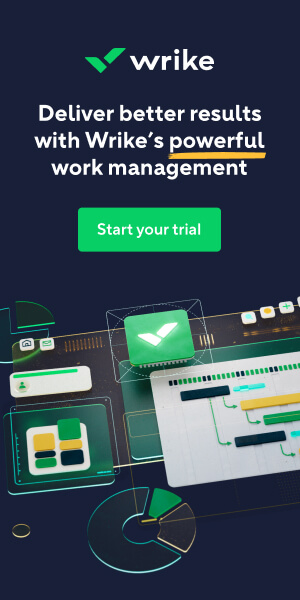Featured Partners: Project Management Software
As businesses start to recover from the pandemic, the number of information technology (IT) projects are picking up. However, companies are also proceeding cautiously. Using a work breakdown structure is one way to handle IT project management effectively.
Read more: Best Project Planning Software & Tools
Table of Contents
- What Is Work Breakdown Structure (WBS)?
- Information Technology Project WBS: Important Guidelines
- Work Breakdown Structure for IT Projects
- Work Packages: The Lowest Deliverable Level of the WBS
- WBS Sample Templates
- Featured Partners: Project Management Software
What Is Work Breakdown Structure (WBS)?
The Project Management Institute (PMI) defines work breakdown structure as a hierarchical decomposition of the total scope of work to be carried out by the project team to accomplish the project objectives and create the required deliverables. It is a prescribed method of breaking down large or complex goals into smaller, more manageable objectives that will help the project manager and team efficiently achieve the final goal or produce the main deliverable.
Among the most common IT projects companies are initiating these days are cloud migration, mobile app development, big data analytics, automation, and artificial intelligence deployment. IT WBS can help divide up these large and complex projects so teams can work simultaneously on smaller, non-dependent deliverables. A work breakdown structure for IT projects helps project managers plan, schedule, and budget for these disparate components.
Read more: What Is Critical Path in Project Management?
Information Technology Project WBS: Important Guidelines
As part of the project management process, the work breakdown structure for an IT project should be comprehensive. It has to cover all project management phases, but it should not be too detailed, either. Here are some guidelines for project managers to make sure that an IT work breakdown structure is easy to track throughout the project lifecycle.
- Clearly identify the project’s most important output as something tangible that users can see or interact with
- Enumerate all activities that team members can perform in parallel, and decompose them further if needed
- Work with the whole project team and regularly communicate with them
- Be as specific as possible in describing WBS elements. Terms like “planning phase” and “design phase” are not deliverables or outputs, and therefore should be avoided
- Check out previously used WBS examples to find what is most suitable and practical for the organization or team
Work Breakdown Structure for IT Projects
After defining the IT project’s scope and deliverables, the next step is to break down the project into smaller work elements so that everything is more manageable. The result of this activity is the work breakdown structure, which should look like a hierarchical chart or tree.
Hierarchy of Levels
The WBS organizes work into a hierarchy of levels, with the first level as the project itself. The second level describes the project’s major deliverables, and additional levels will be the project’s supporting deliverables. Each WBS box is a big or small deliverable, with the biggest deliverable being the project itself.
Visual WBS
A clearly designed IT project management WBS helps visualize the relationship of the project items and facilitates the evaluation of cost and time needed. The lowest level of the WBS will contain work packages, which are the project tasks with the shortest duration. Work packages should have tasks with a duration of no more than 10 days (80 hours).
Deliverables Only
Project managers should avoid creating an IT project WBS that focuses on actions or company structure, like “create a job request form” or “IT Help Desk.” Instead, focus on clear outcomes, such as “final job request form” or “help desk wiki page.” WBS elements should be output-oriented with concrete project deliverables. Remember, a deliverable is any product, service, or achievement of specific objectives or goals.
Read more: Project Tracking Software & Tools
Work Packages: The Lowest Deliverable Level of the IT WBS
It is important to determine that a work package is small enough to be manageable. One common test is the 8/80 rule, which suggests that a work package should take no less than 8 hours of effort, but no more than 80 hours (10 days), or a standard reporting period. Other rules to consider are:
- The total time and cost of a work package is clearly defined and accountable.
- It is not possible or advantageous to break down a work package any further.
- Ideally, only one person is responsible for the work package.
- It is possible to track and monitor the task’s execution from start to finish.
WBS Sample Templates
Users can create IT work breakdown structure templates using office suites and productivity software like Microsoft Excel or Word. Here are some sample work breakdown structure templates that teams can use for their IT projects. However, note that project management software has built-in tools that simplify not only the creation of WBS, but also complete project management plans — as well as tracking tasks, milestones, and deliverables.
Featured Partners: Project Management Software
If you’re interested in learning more about top-rated project management software, the editors at project-management.com actively recommend the following.















